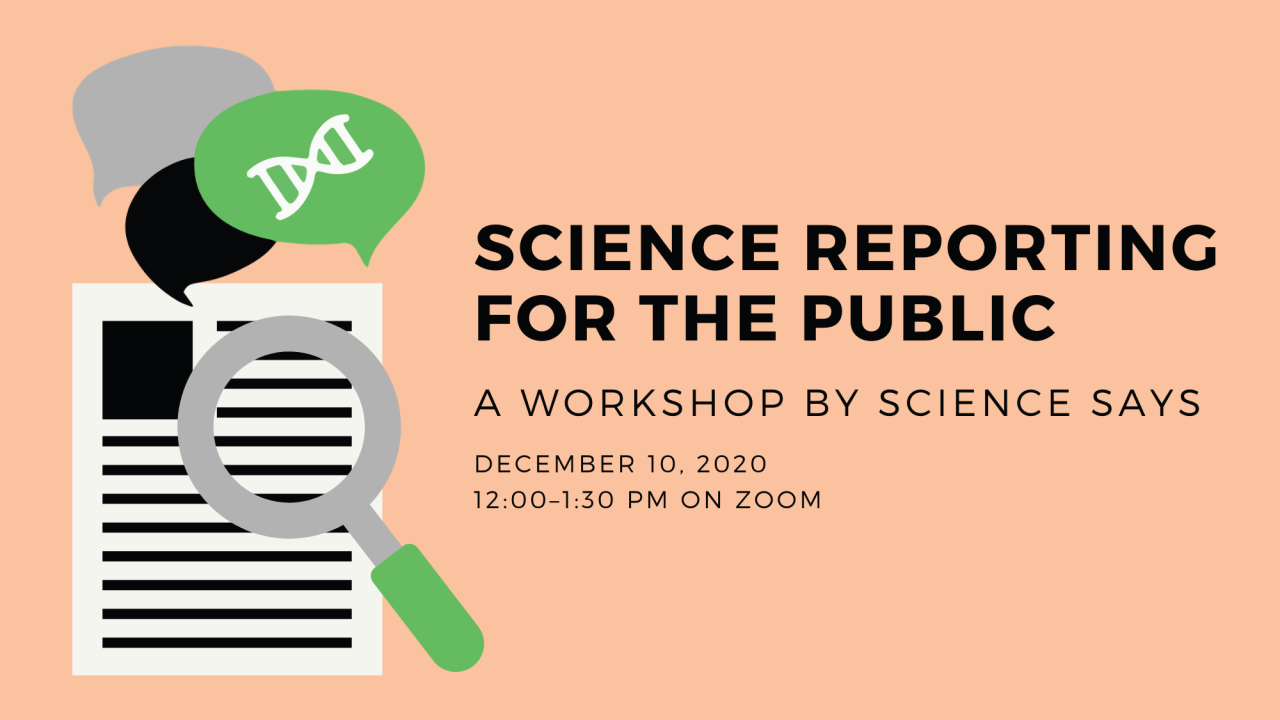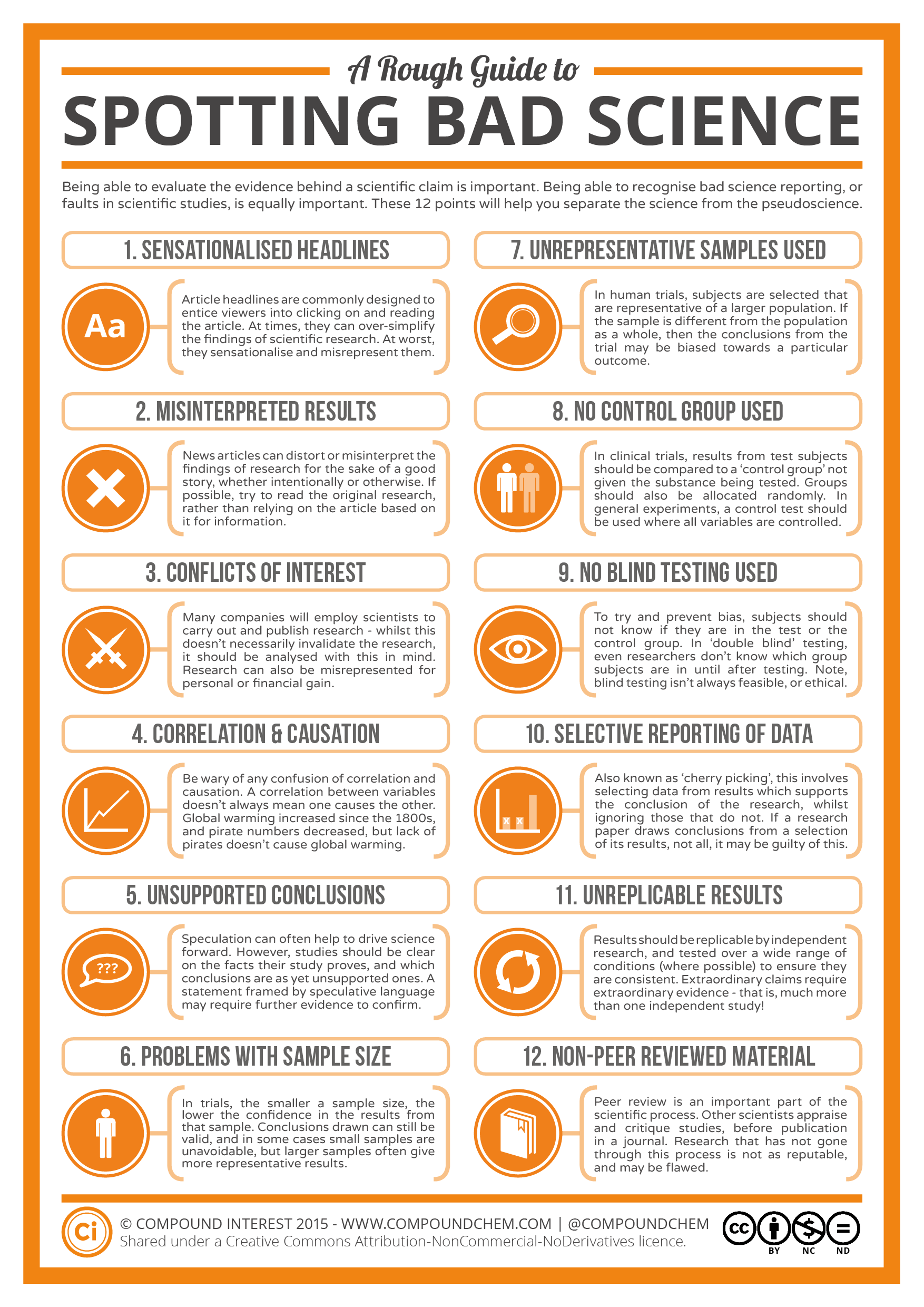
Best Practices for Reporting Science for the Public
The average person interacts with science through news outlets, yet science is constantly evolving with every new paper’s results. Often, results are sensationalized to grab the attention of readers instead of honestly reporting the material. So how do we, as scientists, report science responsibly and effectively? In her “Science Reporting for the Public” workshop, Lindsey Mooney describes some of the obstacles and best practices for reporting science.
Science reporting at news outlets is primarily performed by journalists instead of scientists. This is valuable in that journalists are trained to quickly synthesize and articulate a topic, but it can still be challenging for journalists without a science background to thoroughly understand and explain science topics. This can lead to the unintentional spread of misinformation. Although scientists have many years of training in a specific field, they may place too much emphasis on jargon or fail to explain prior knowledge needed to understand the topic, thereby limiting the article’s accessibility. Additionally, it can be challenging for writers with expertise outside of science, or a scientist outside of a specific scientific field, to comb through primary science papers looking for information to support their article. While it is important to take all the time possible to understand the science at hand, Science Says developed a worksheet to help pull out important information from science papers quickly. At a glance, this worksheet provides information on evidence supporting the results of the paper and defines any essential jargon. It also allows for critical reflection into any prior biases or opinions one might have on a particular topic. It is imperative in science reporting that the article be as unbiased as possible. It is crucial to provide adequate and clearly explained evidence, without over emphasizing statistics that can be misleading or misquoted. It may also be helpful to preemptively answer questions or critiques that may arise from a dissenting opinion.

How do you formulate an article based on all the information you’ve gathered? Start with a hook—connect the topic to a bigger theme. For instance, take one of Lindsey’s articles published last year; it starts off with a relatable hobby of watching true crime shows and leads into the psychology behind the fascination. Connecting the topic to a bigger theme can happen near the end of the article too. In a recent article, author Esther Nosazeogie connects bird migratory stress and human-induced environmental changes. Keep in mind the goal is to be interesting, but not indulgent in clickbait sensationalism.
Next, find the story line. We’ve had a workshop and an article about ways to identify and develop a science story. Facts will be the majority of the article, and it is important to remember not to overstate the outcome of the research or mislead with statistics. It may be of interest to contact an expert in the field, either the author of the paper in question or another credible source. It may also be that one needs to read multiple papers to acquire enough foundational information to explain the topic accurately and clearly.
And of course, finish with a strong conclusion! Provide readers with a quick summary of all the information in the article without overwhelming them. Readers are likely to skim, and a strong concluding paragraph will help them retain the information.
Now that you’re prepared with a worksheet to get you started analyzing a science paper and the steps needed for creating a solid article, you’re ready to write! Remember, you can send Science Says an article pitch at davissciencesays@gmail.com when your story is ready.
Sydney Wyatt is a PhD student at the University of California in Davis. For more content from the UC Davis science communication group "Science Says", follow us on Twitter @SciSays.

Comments